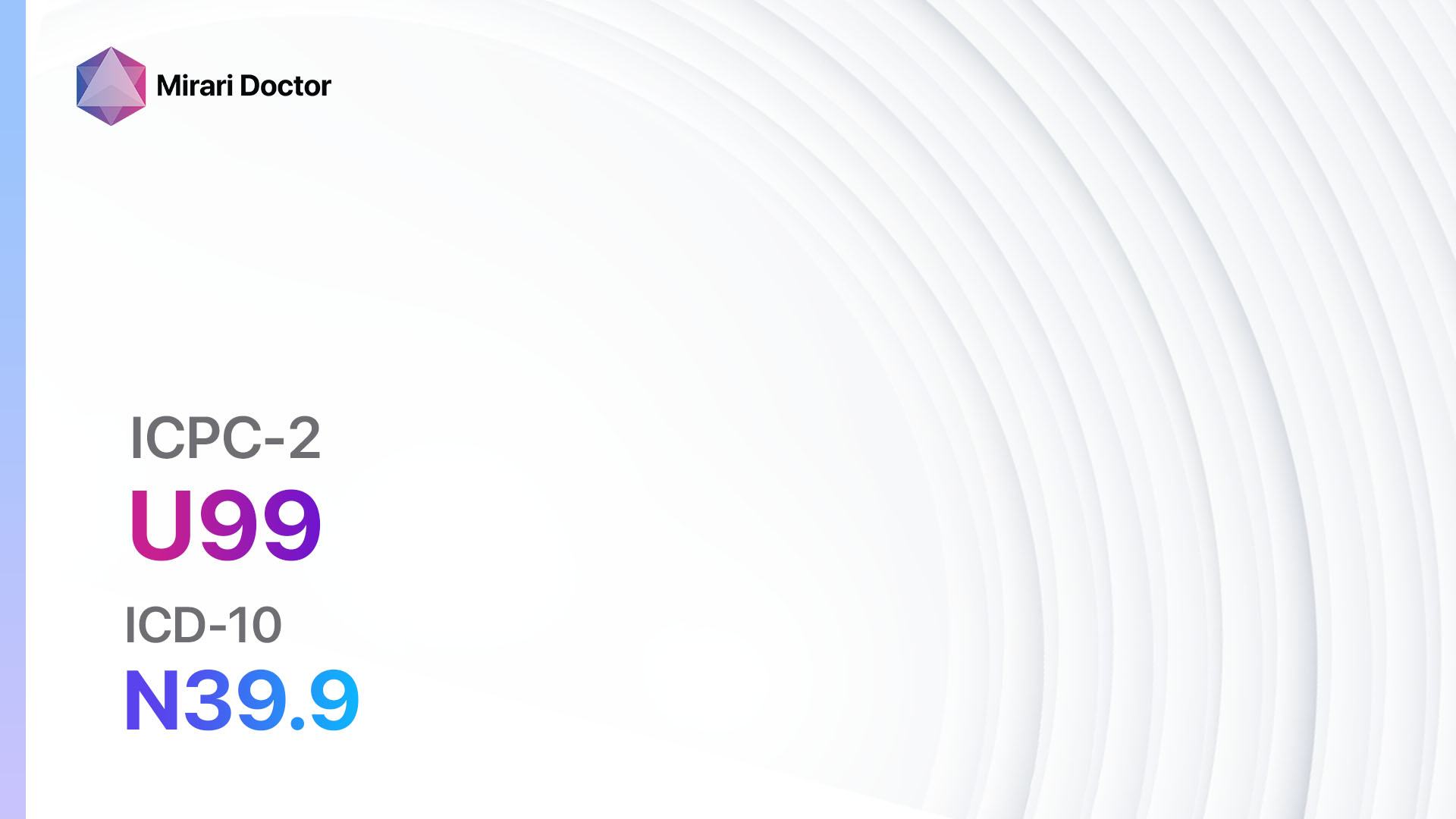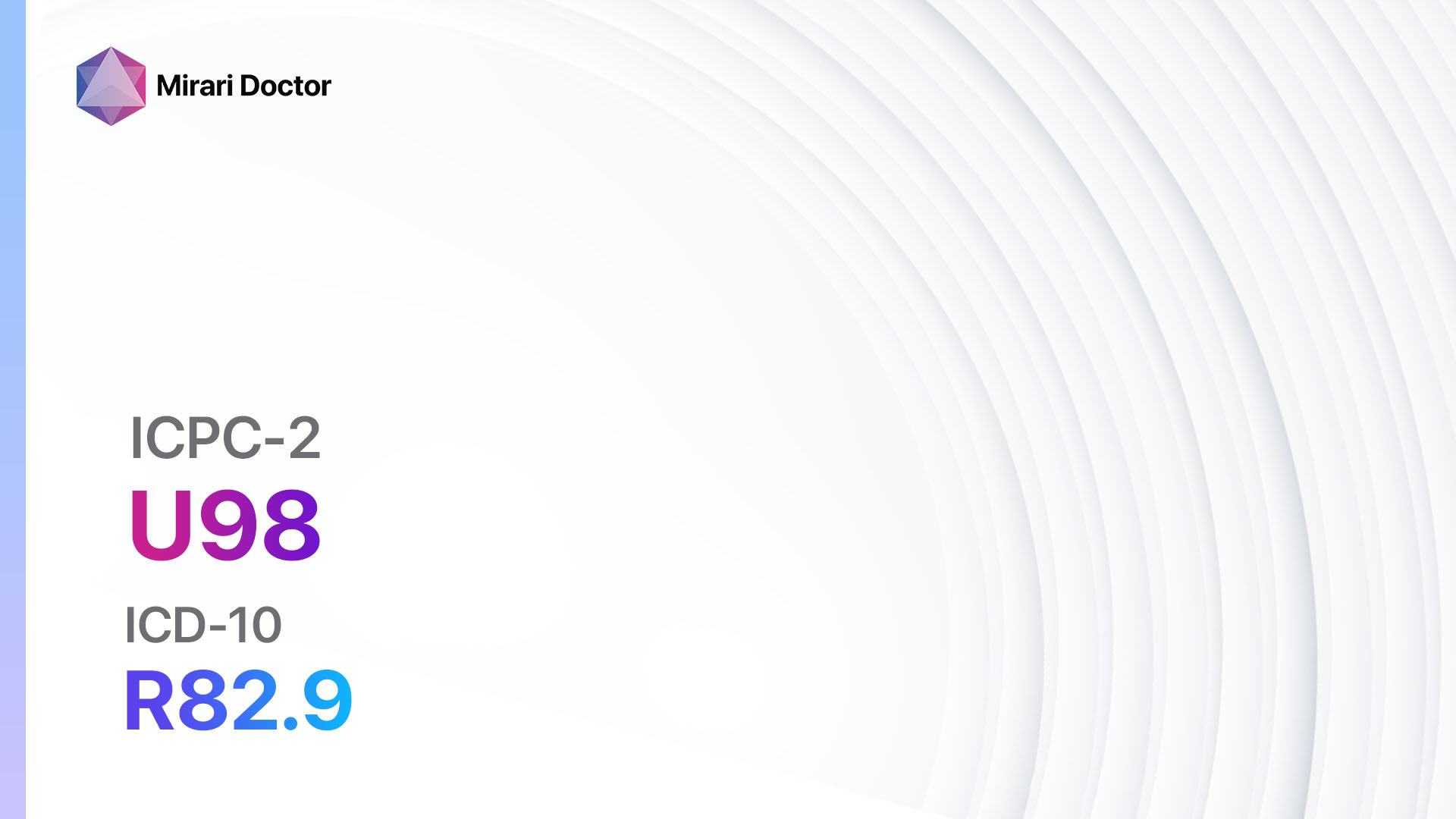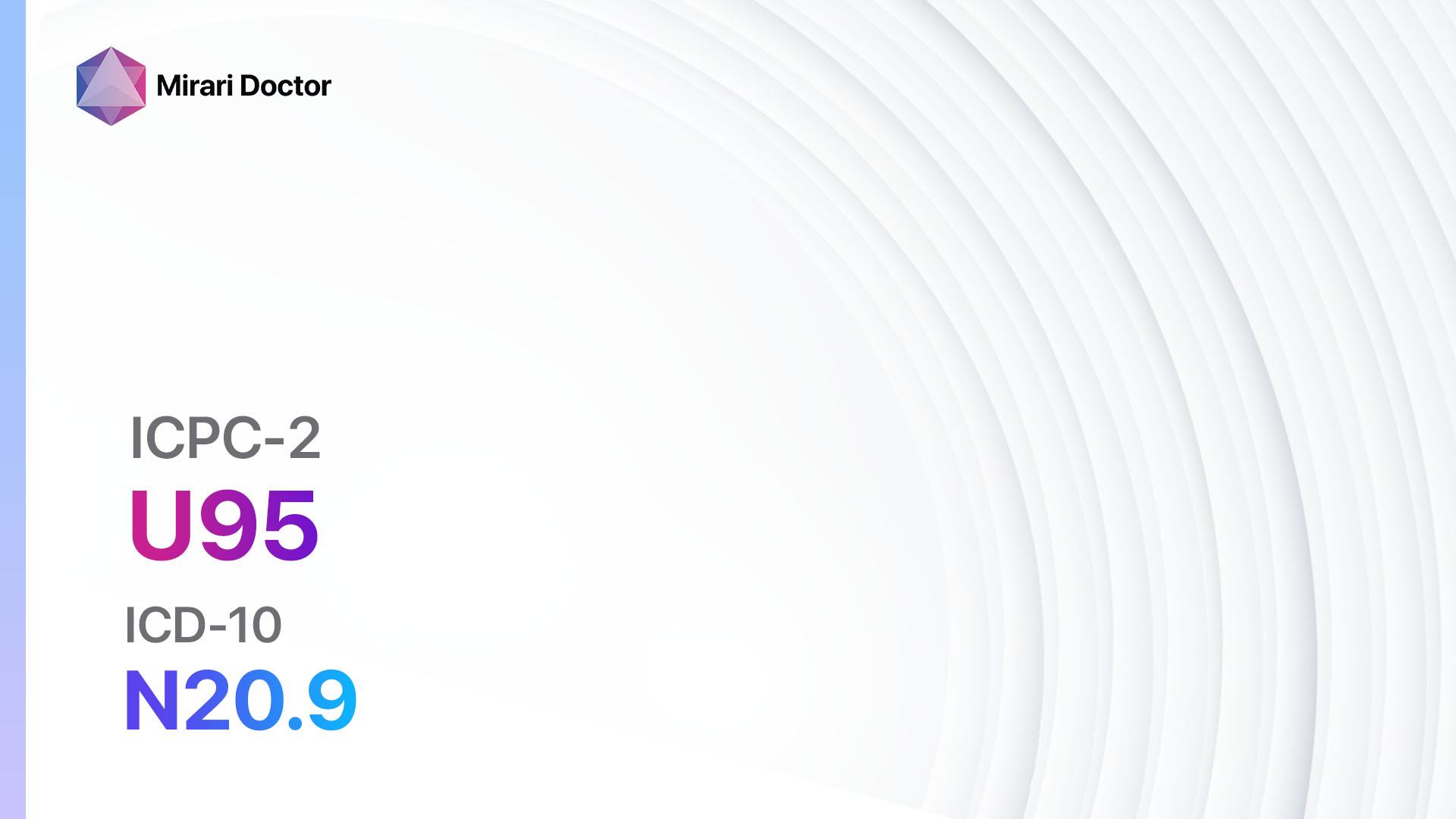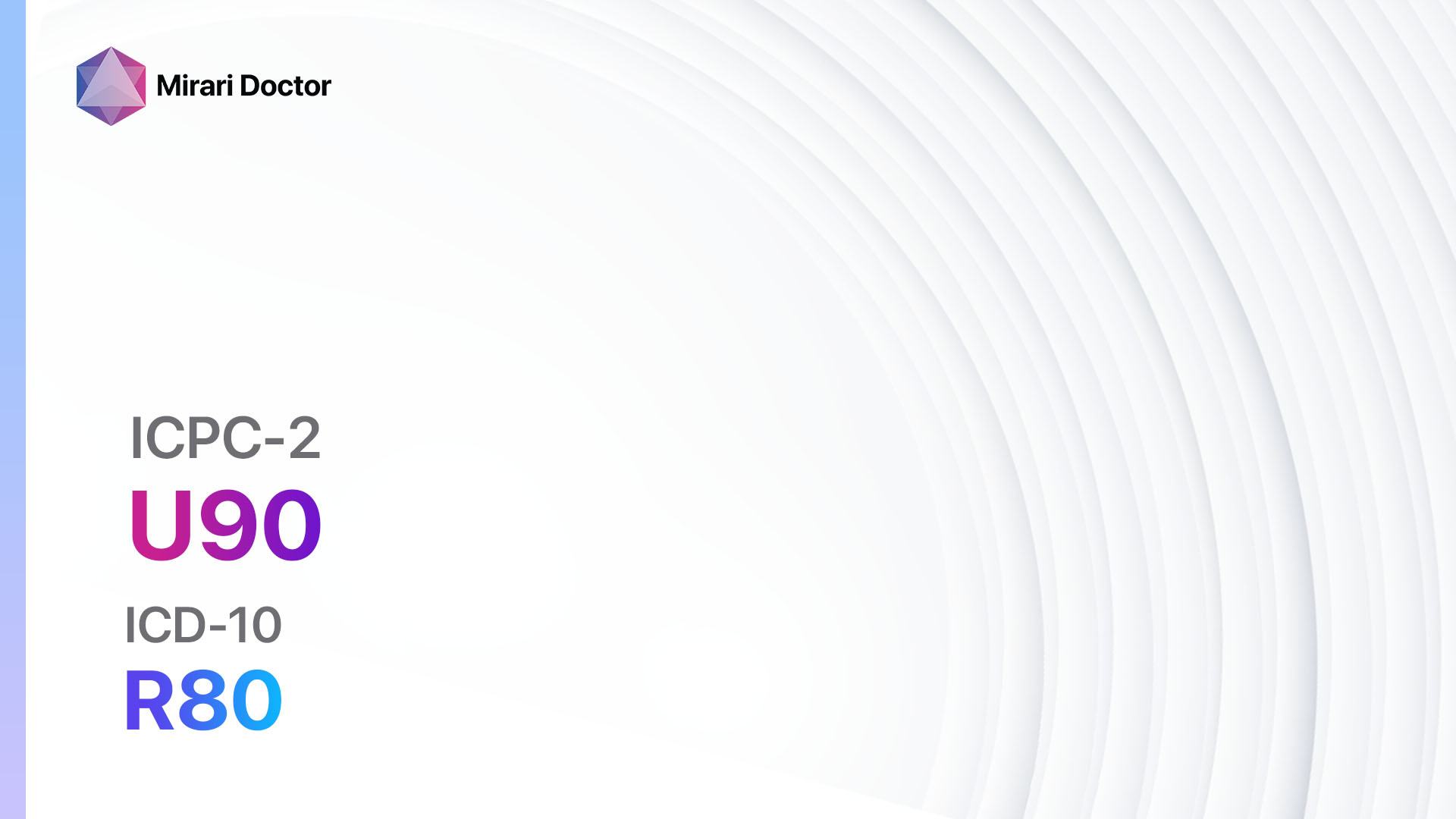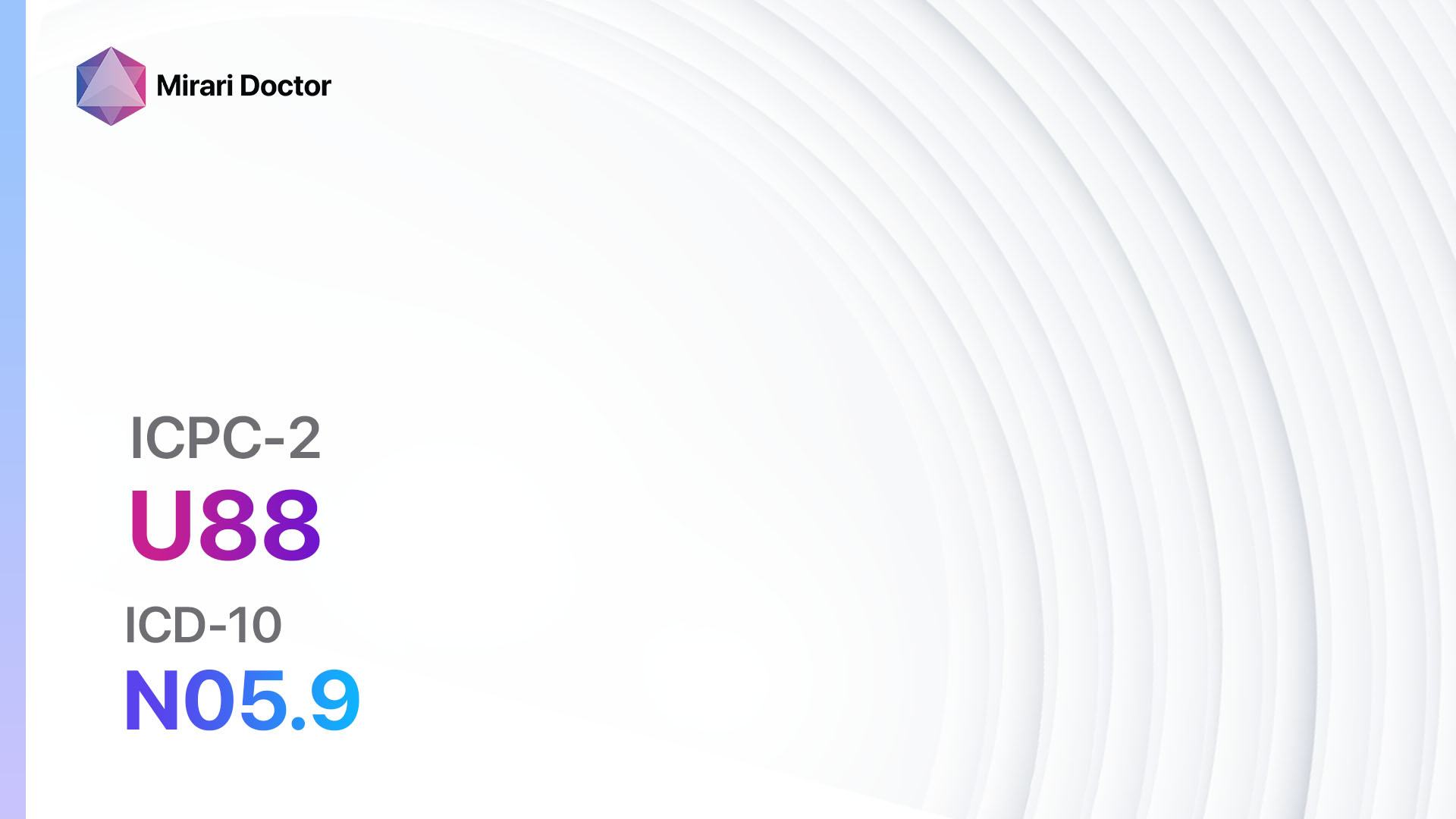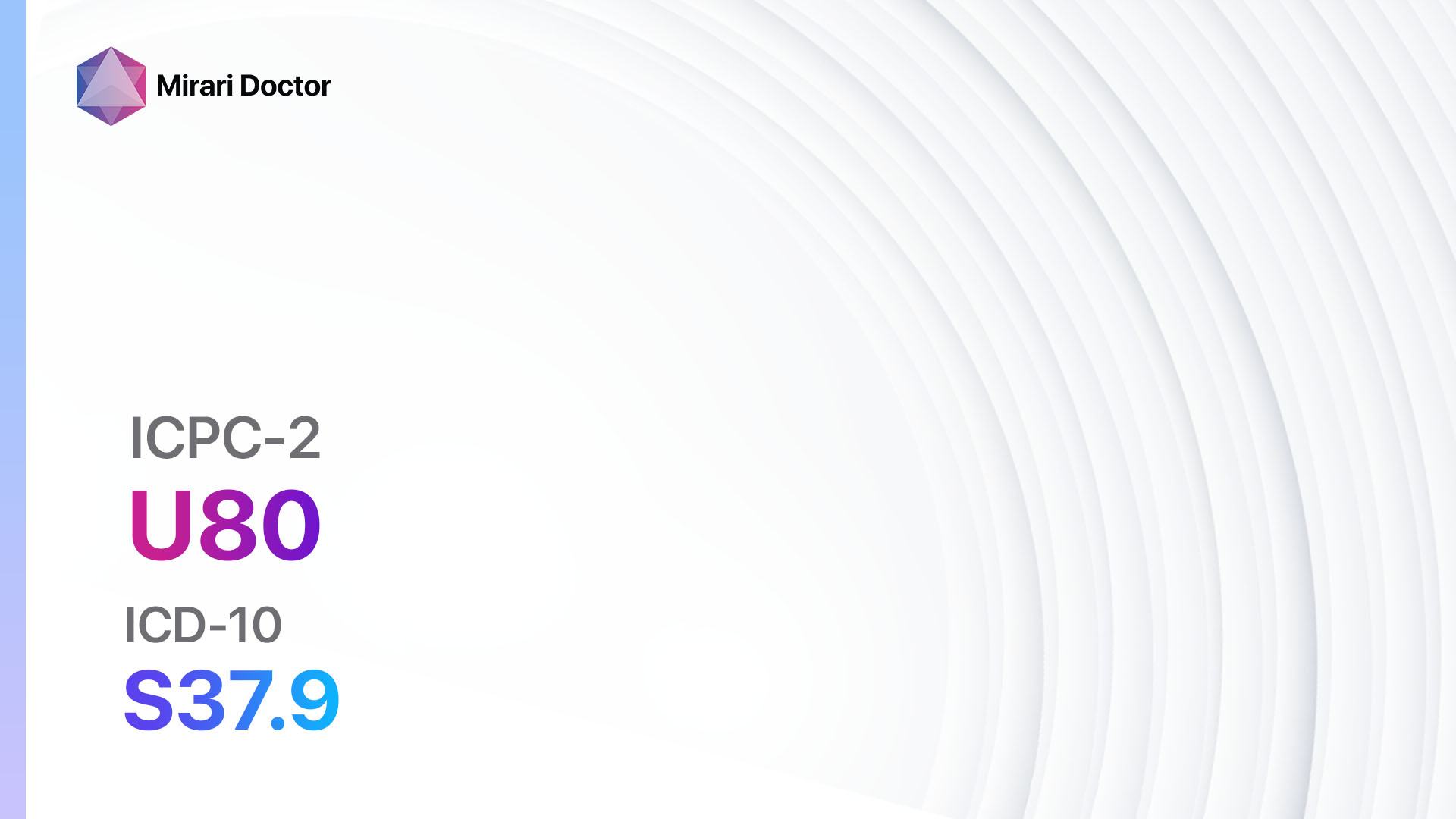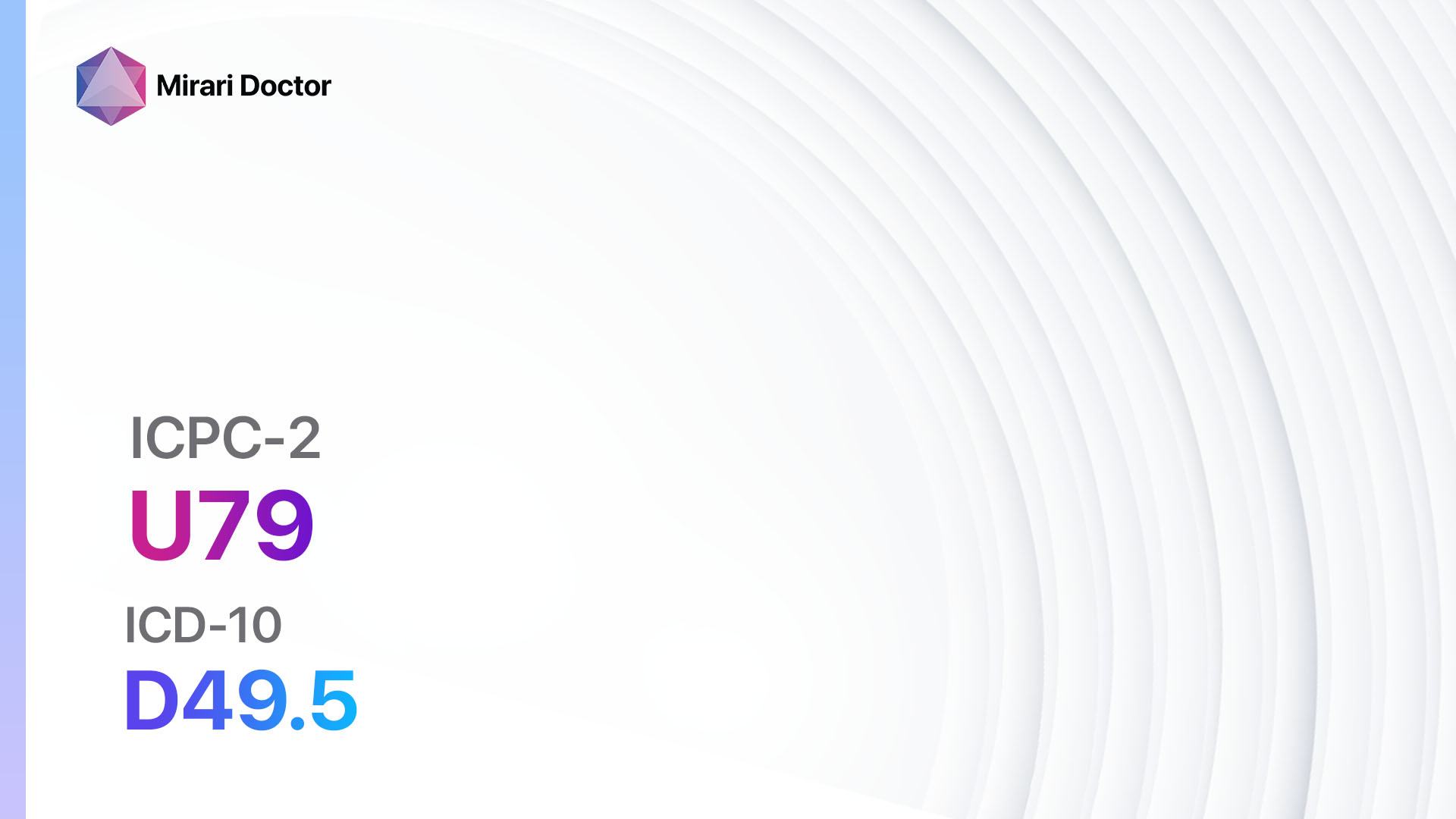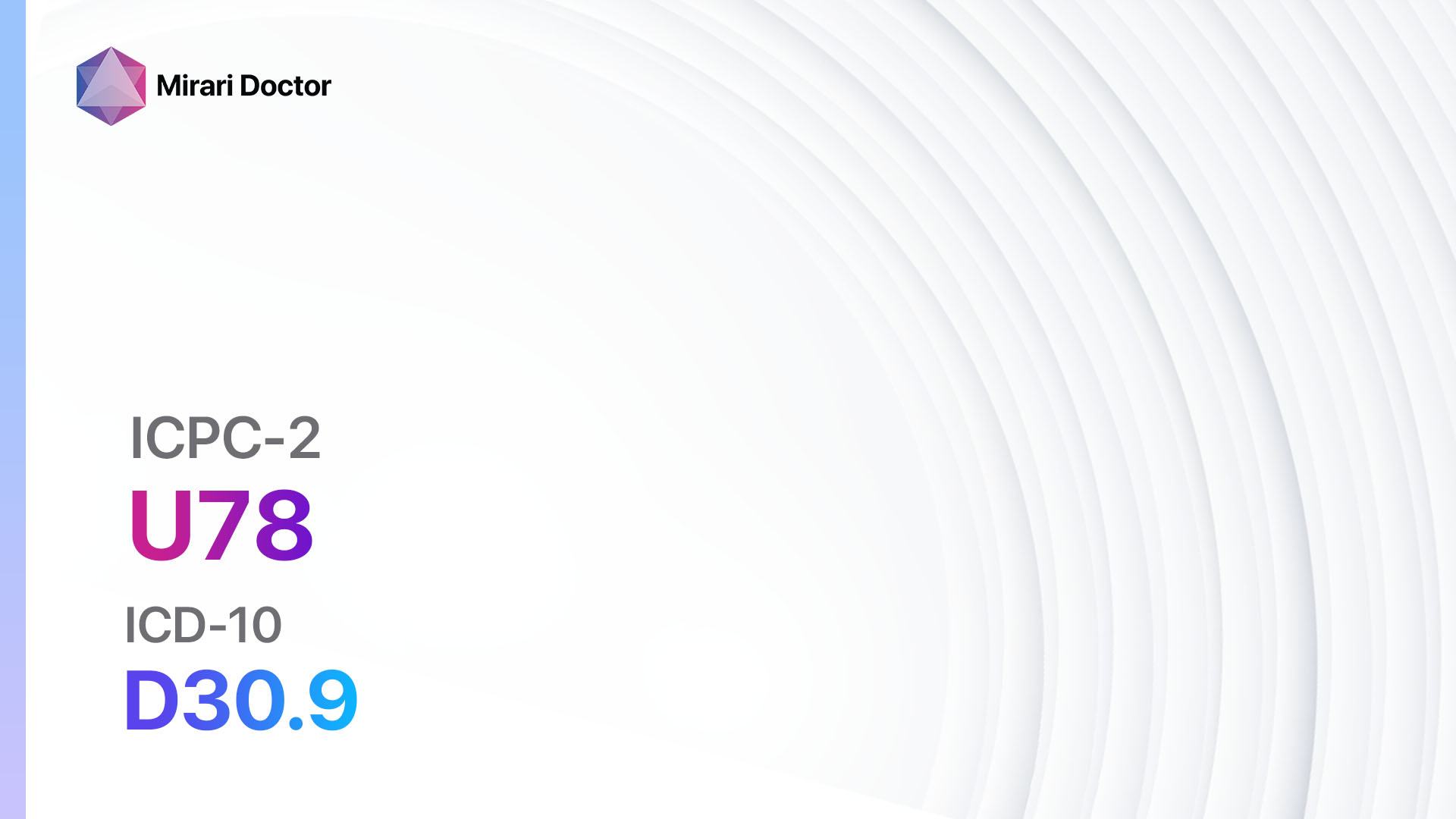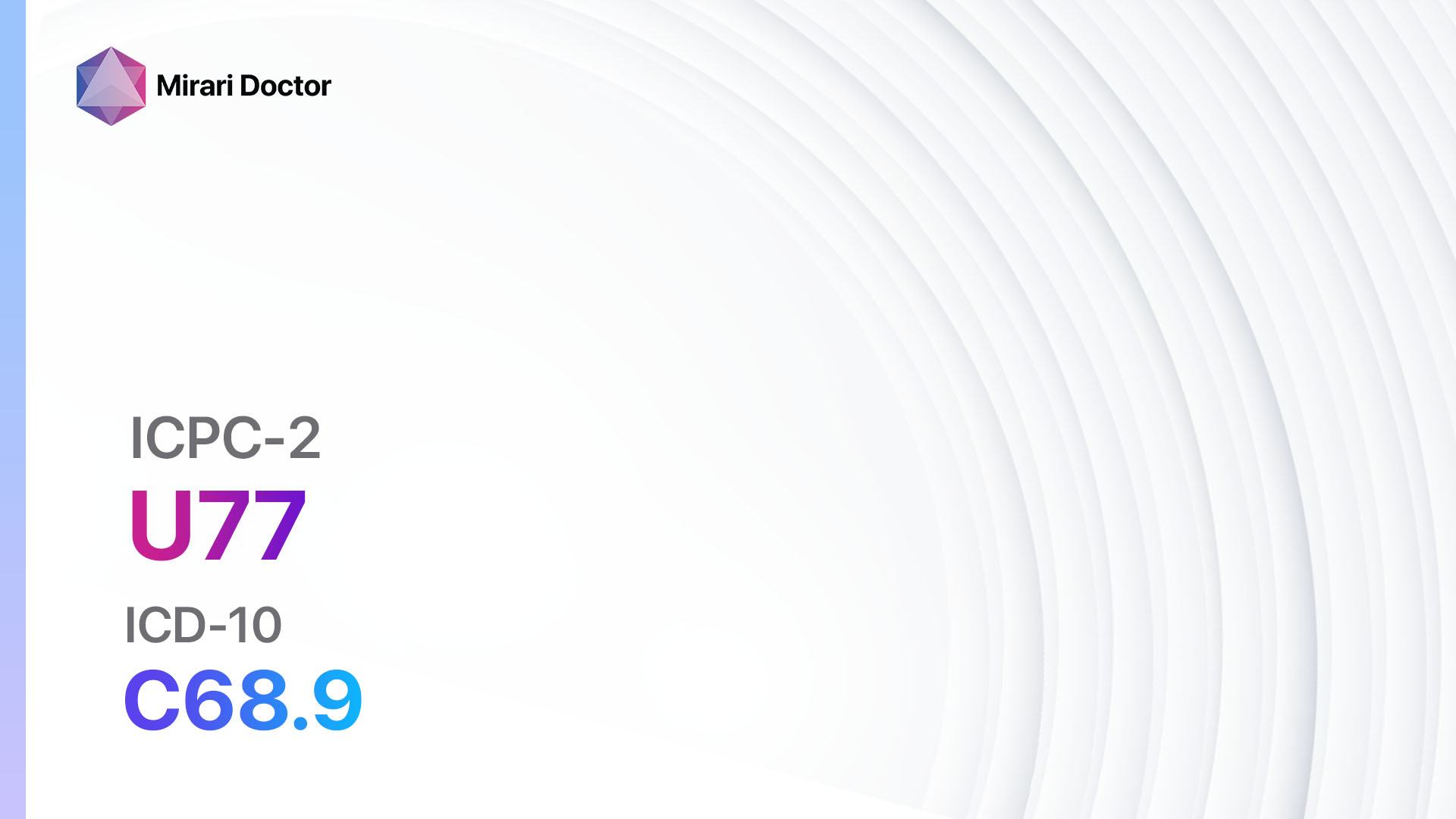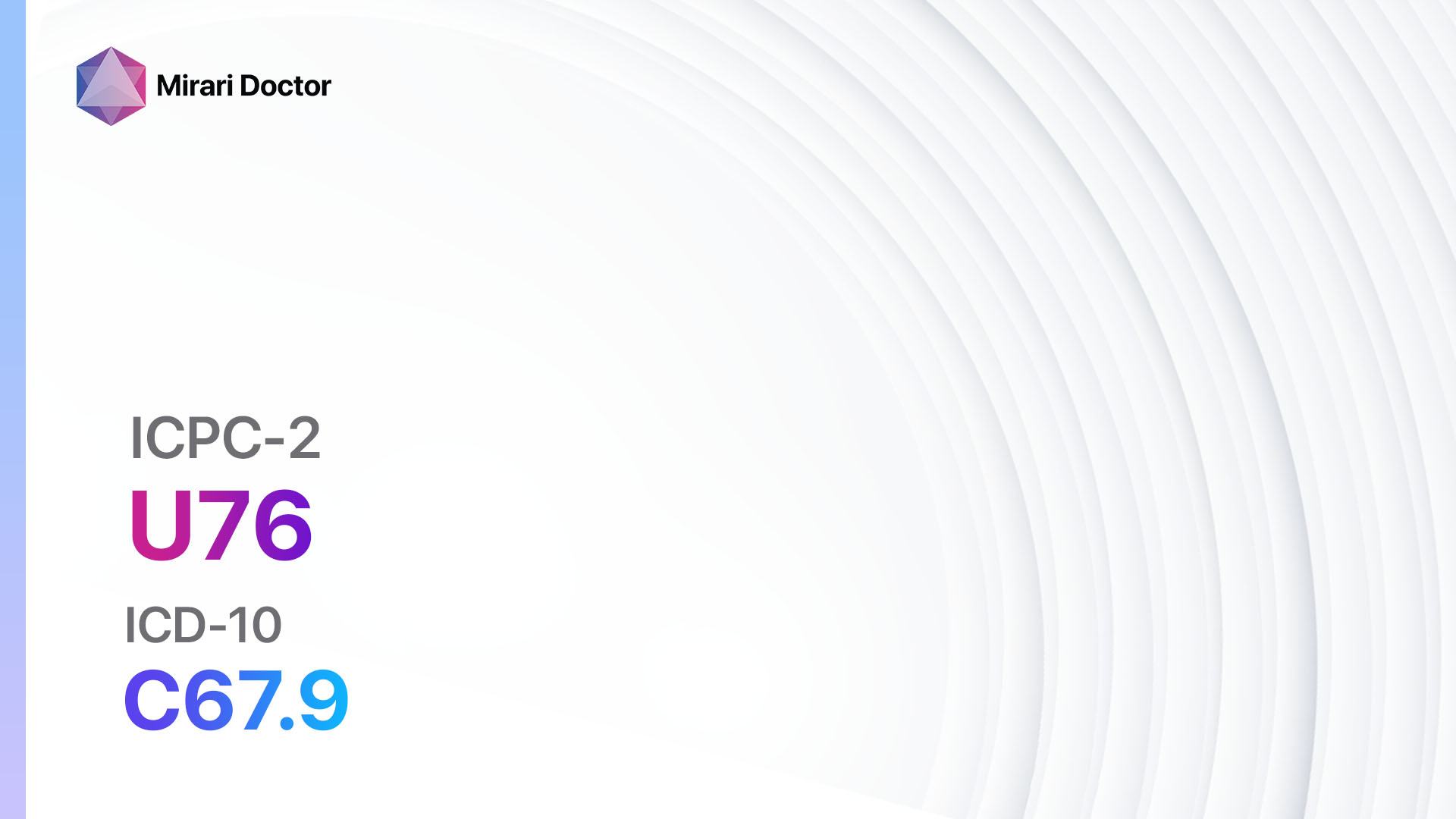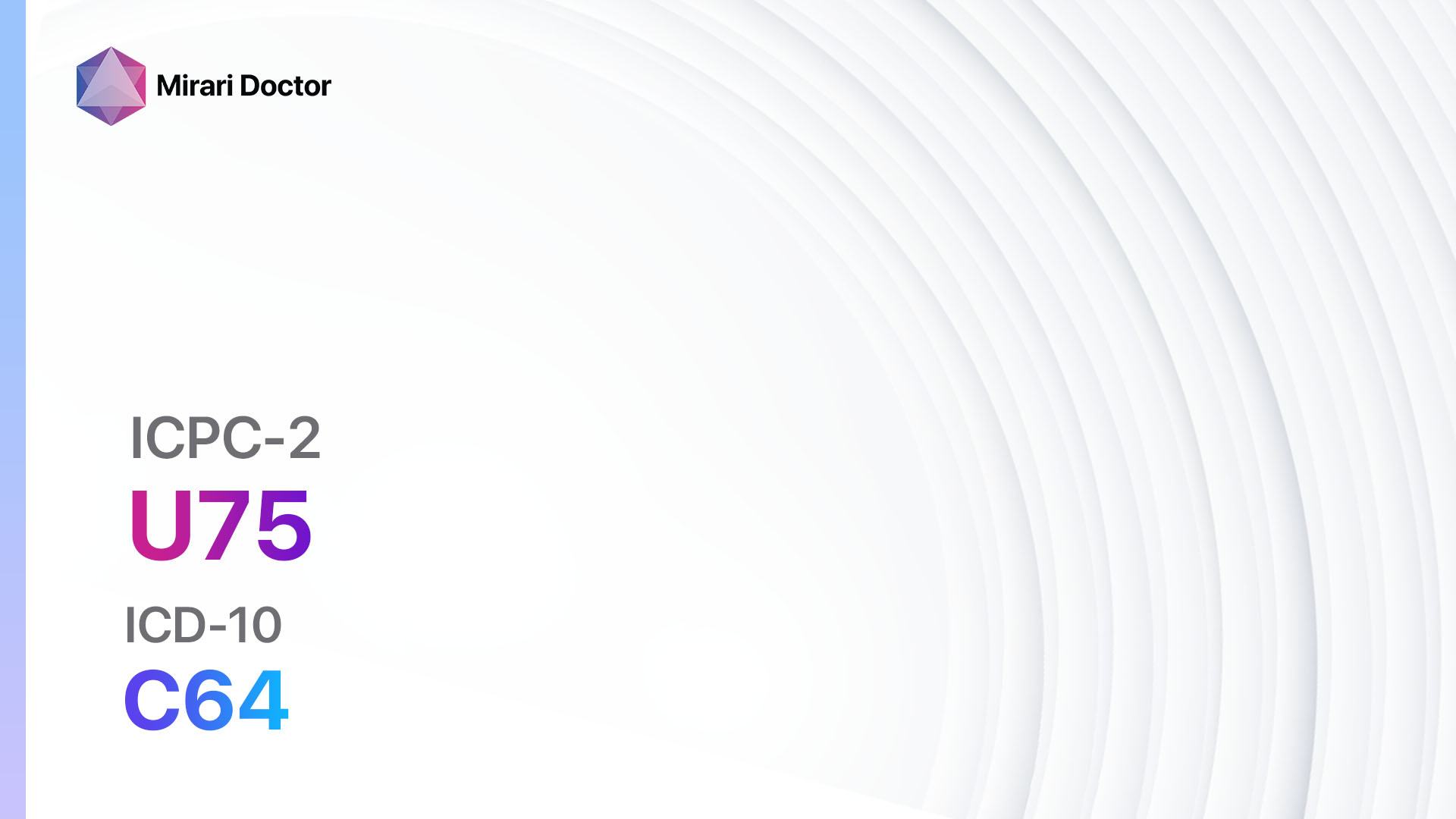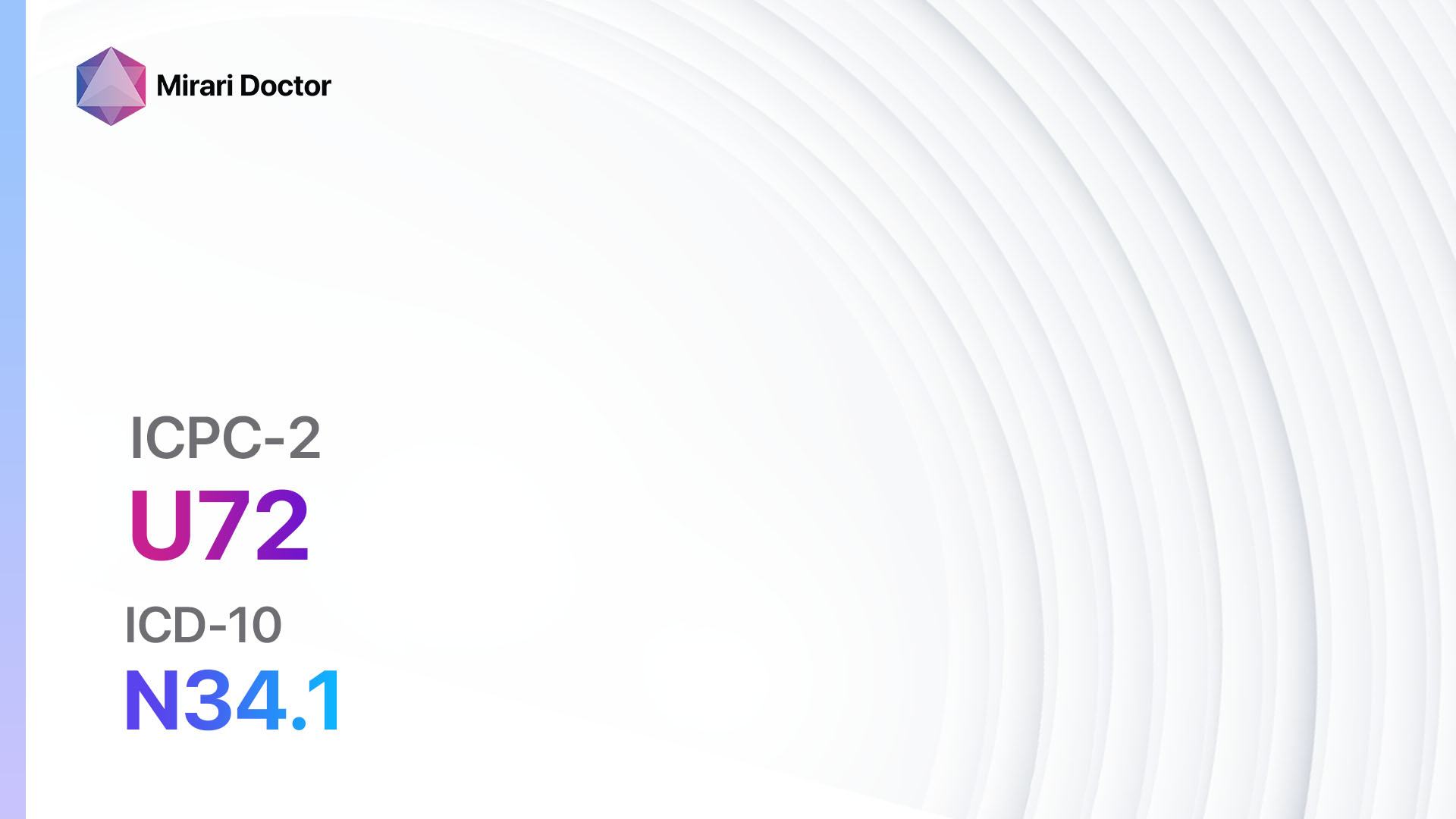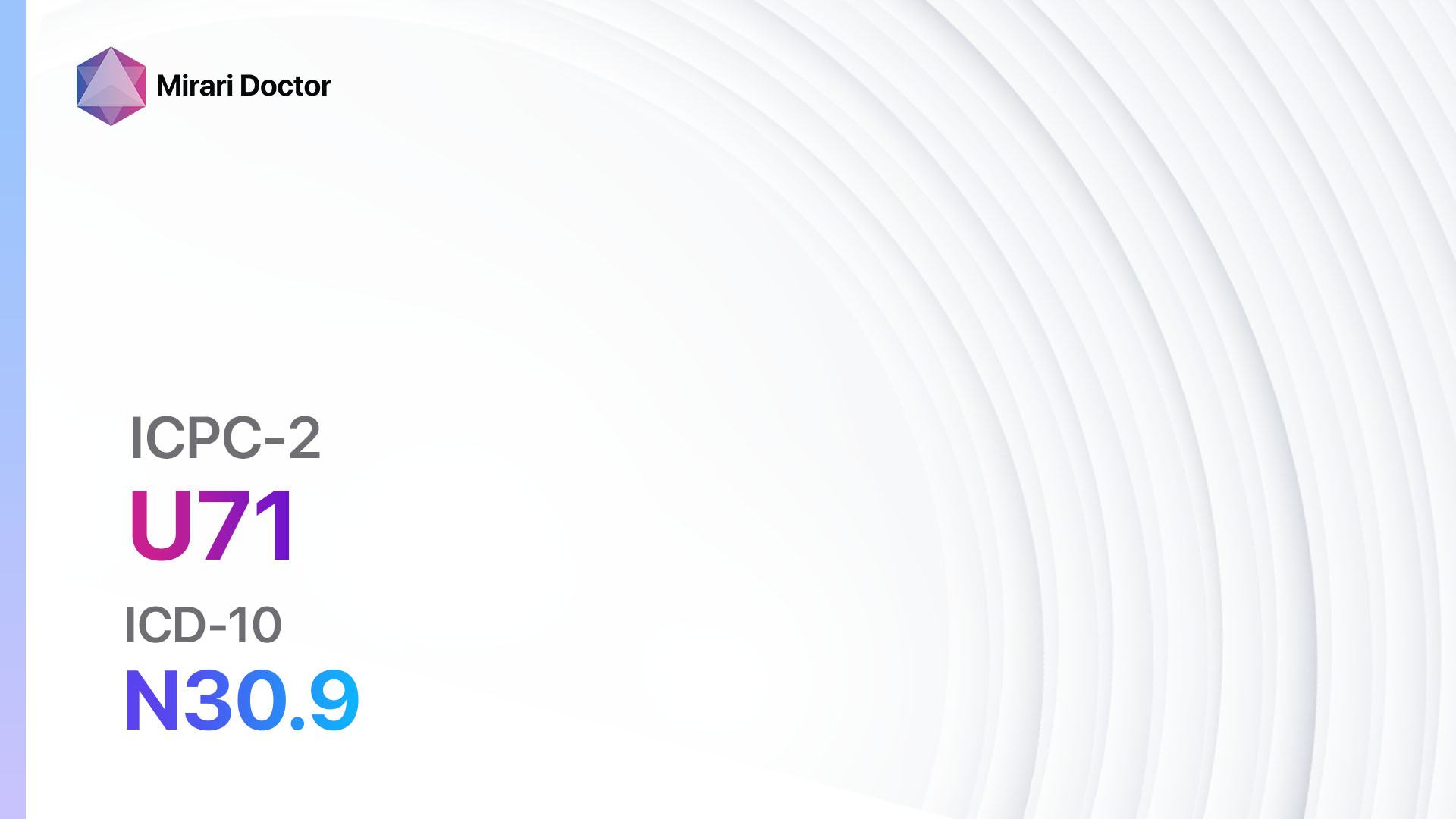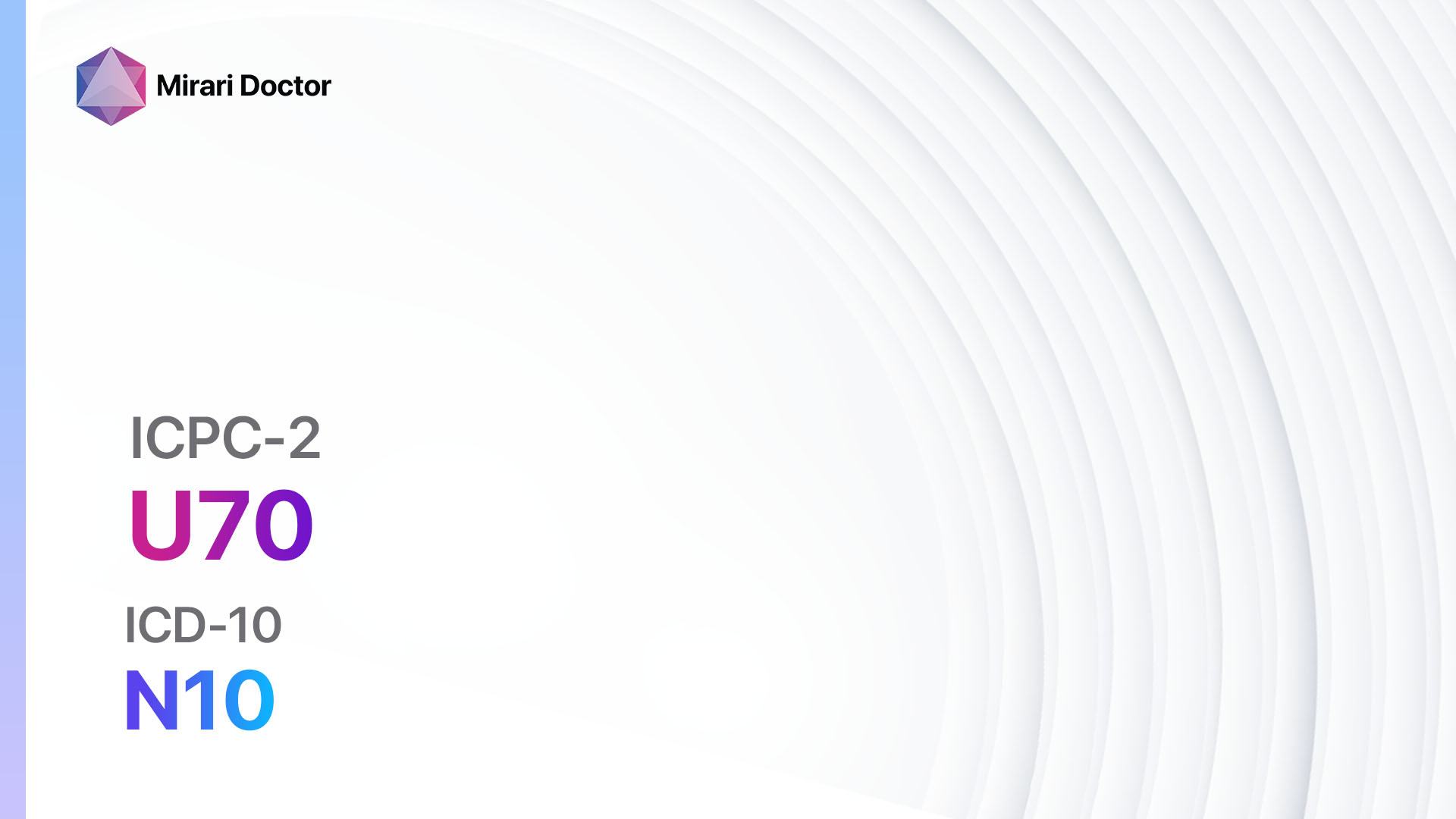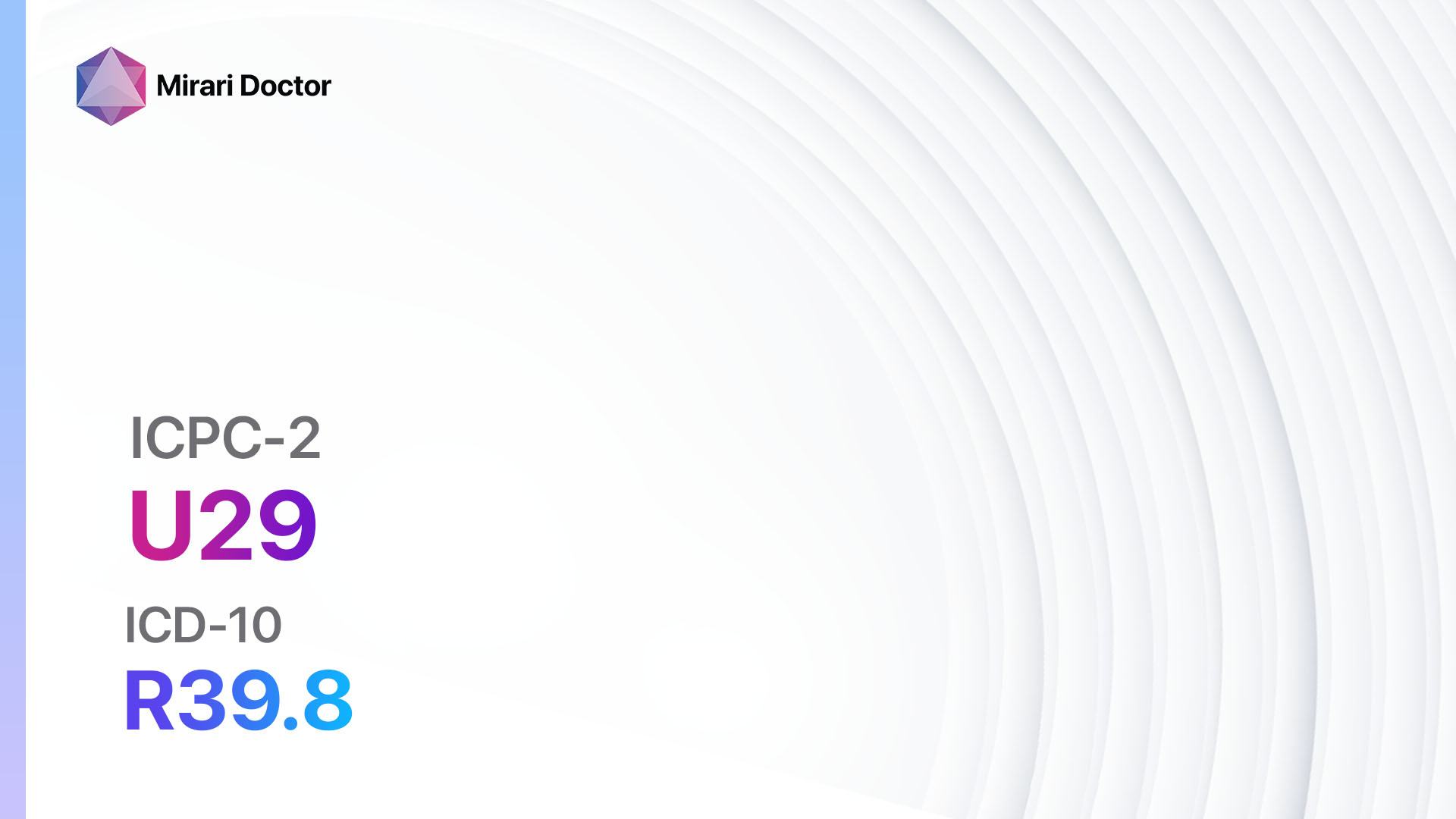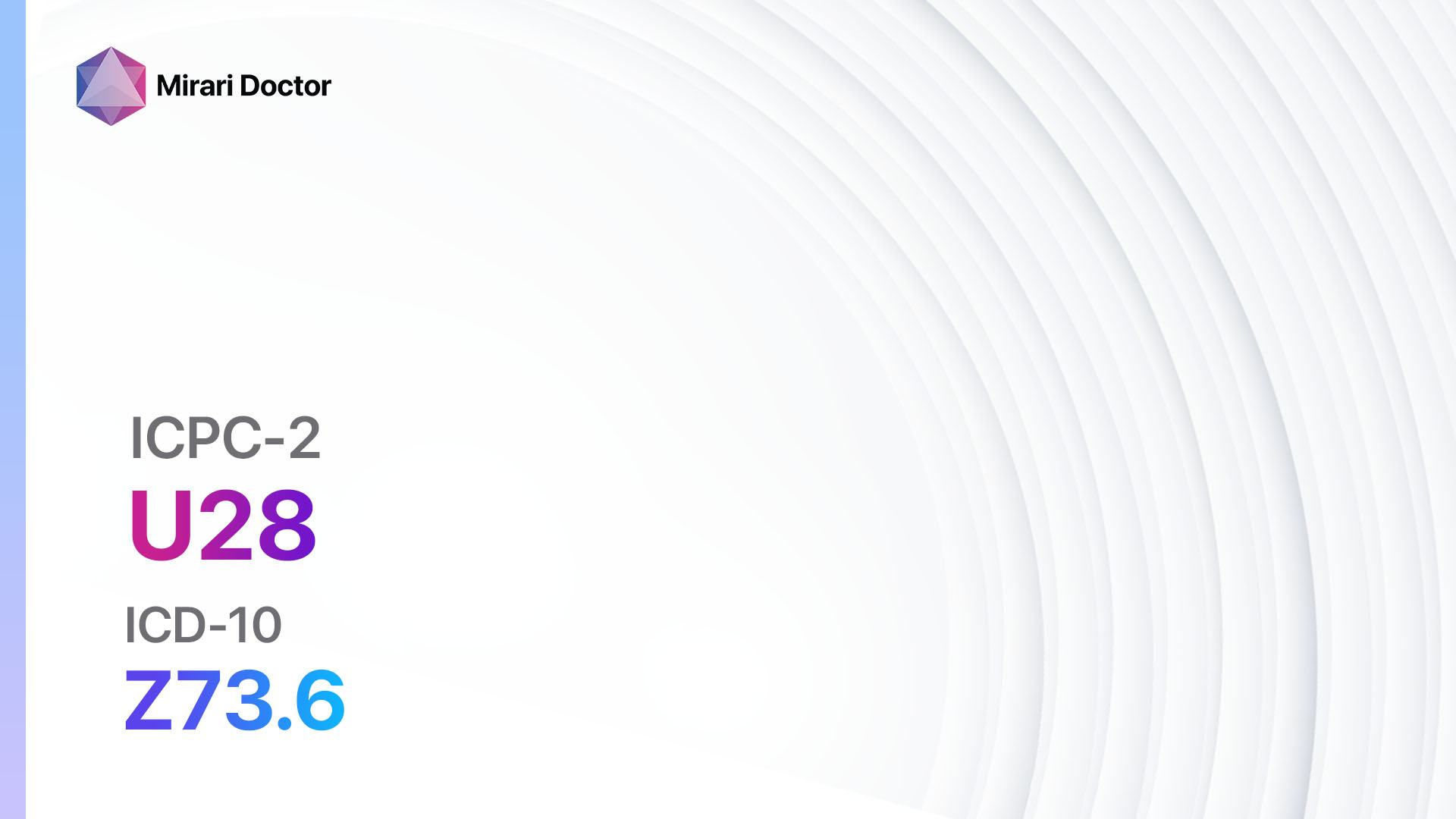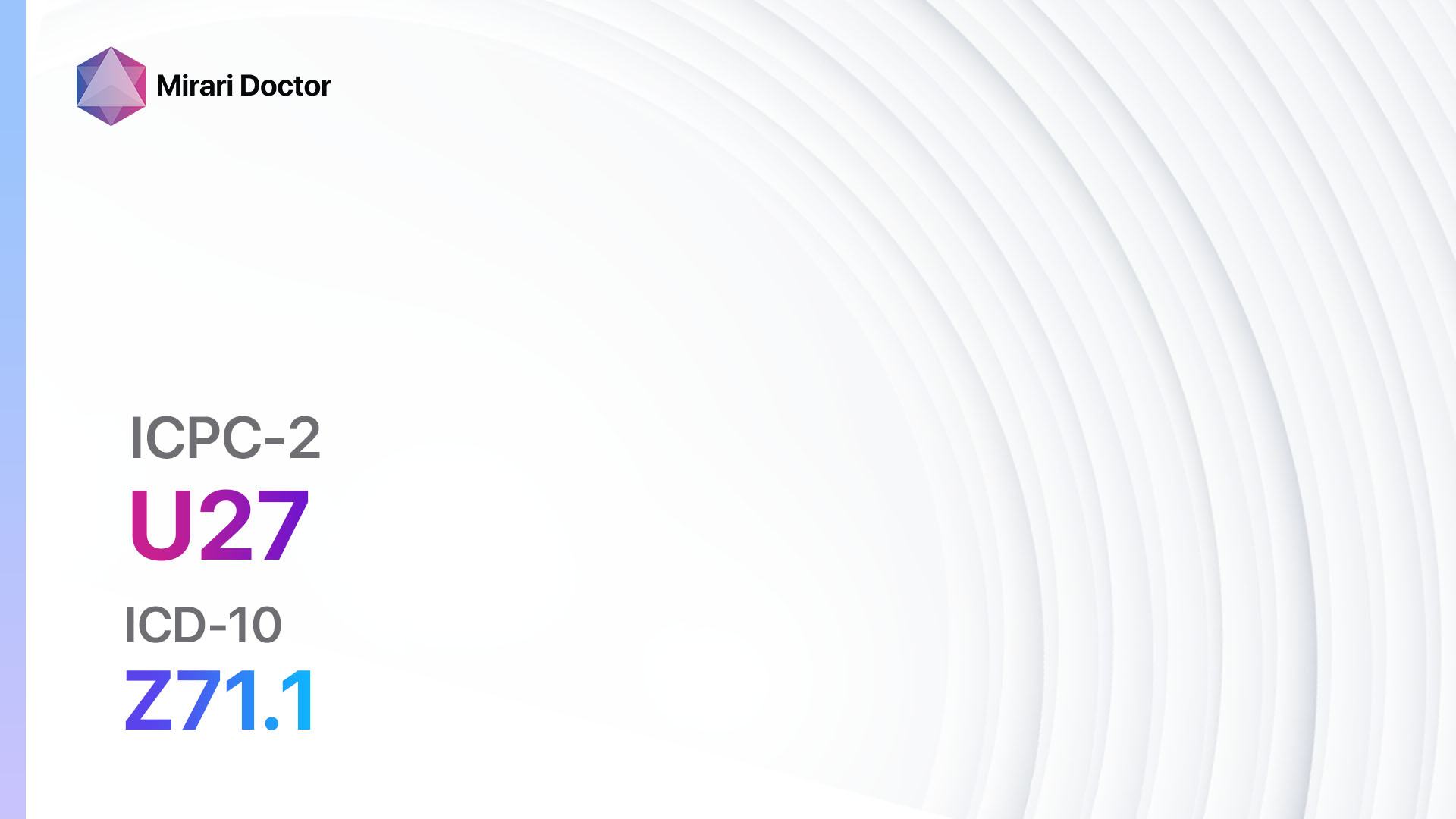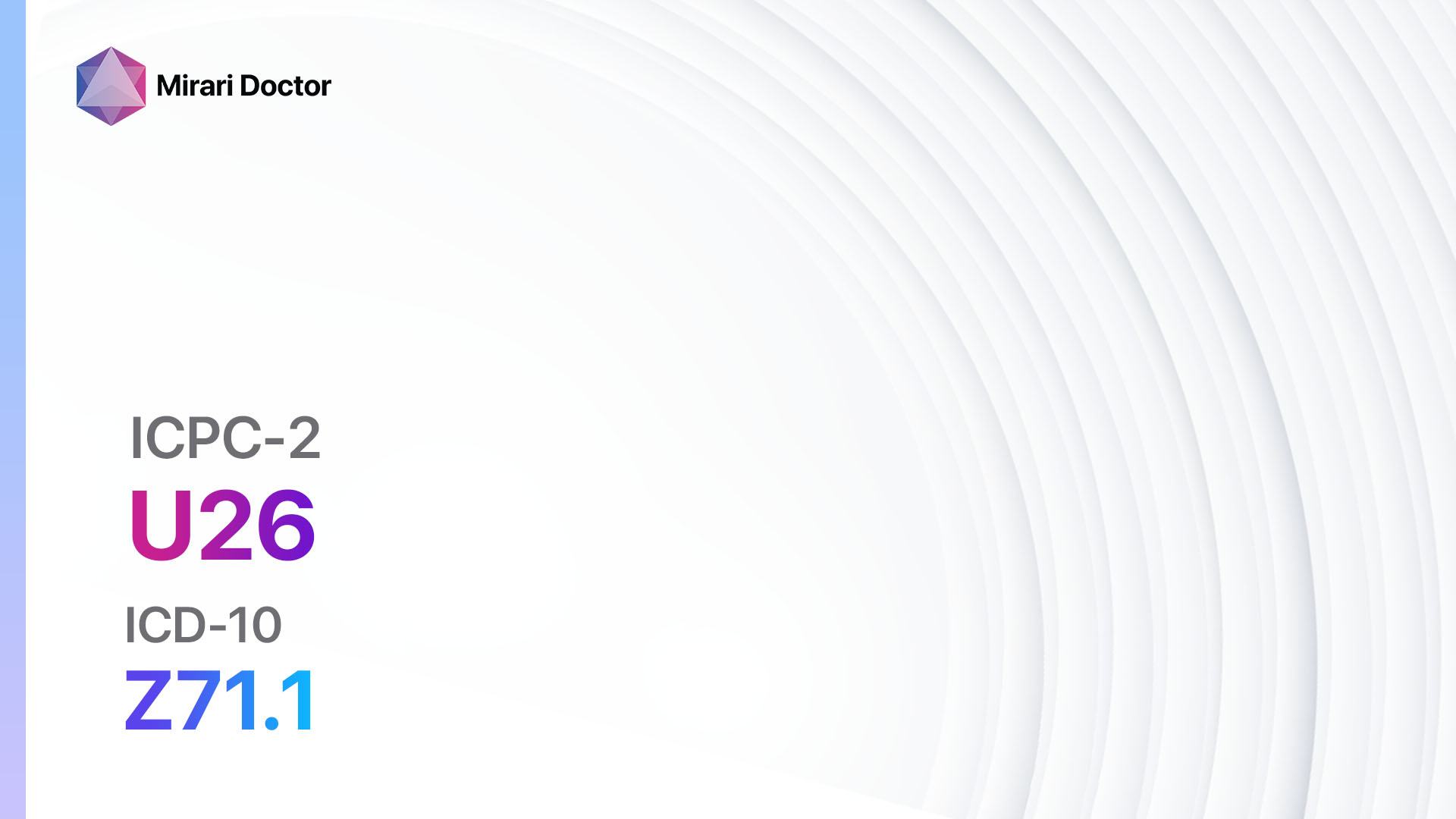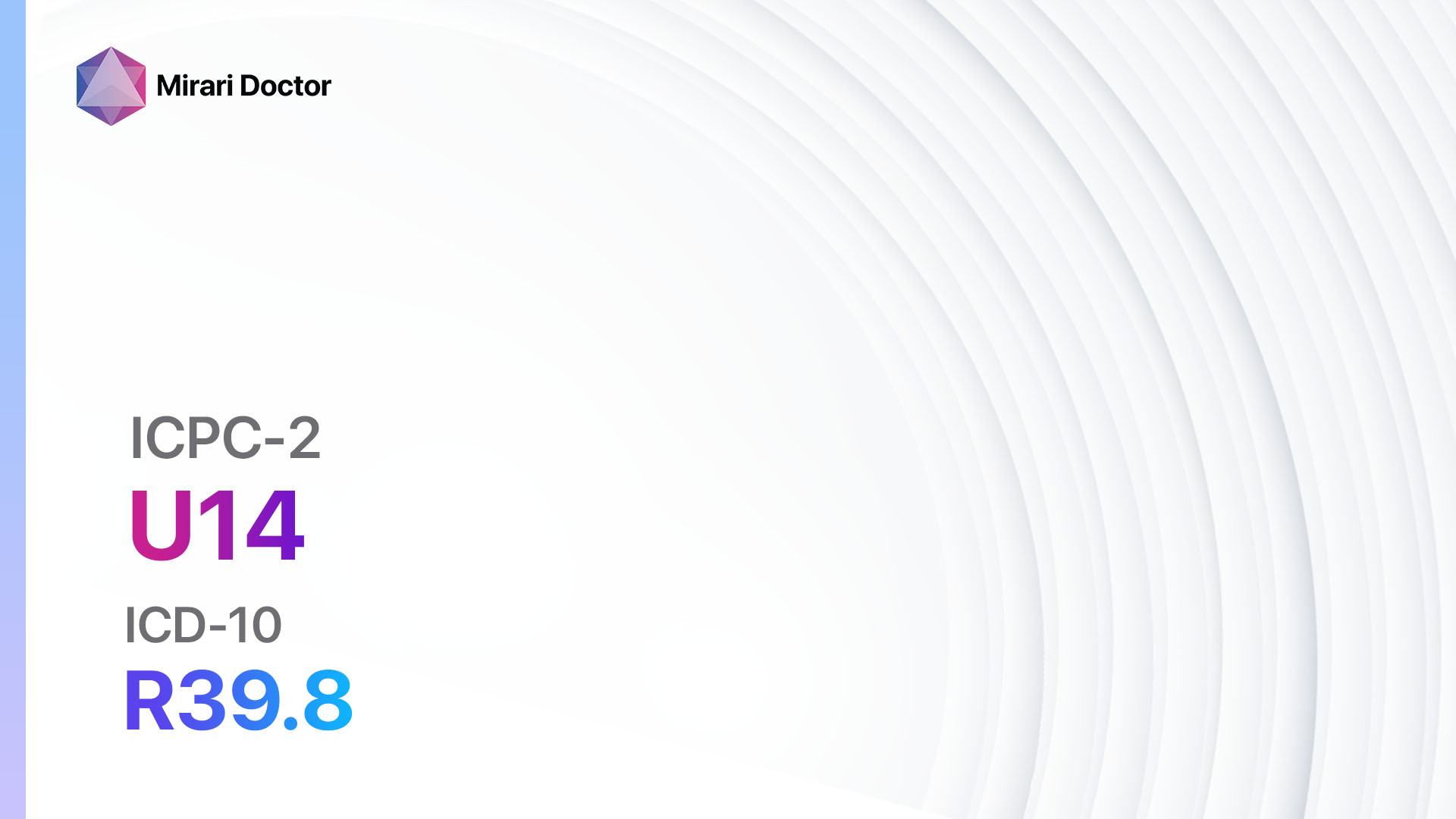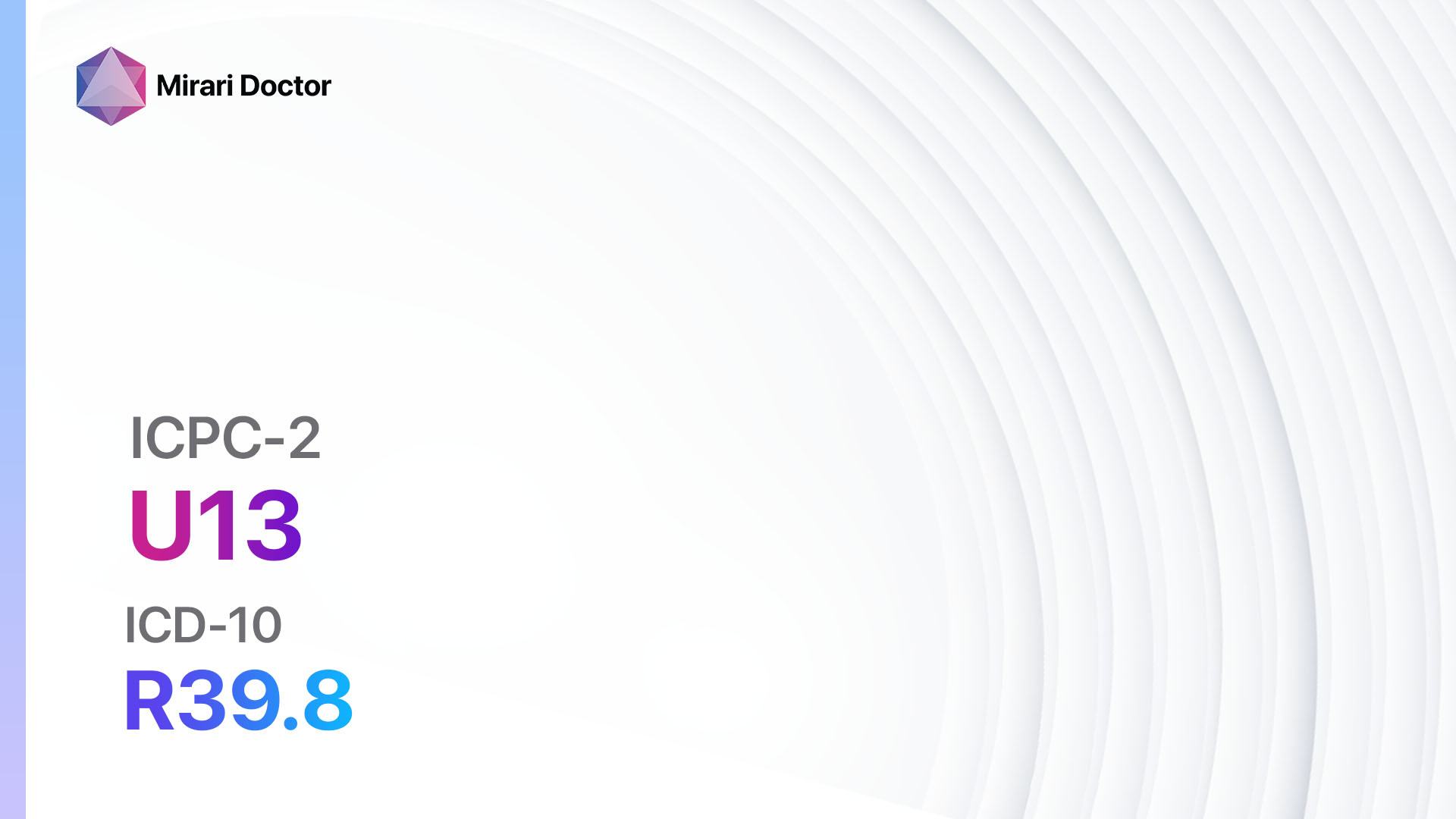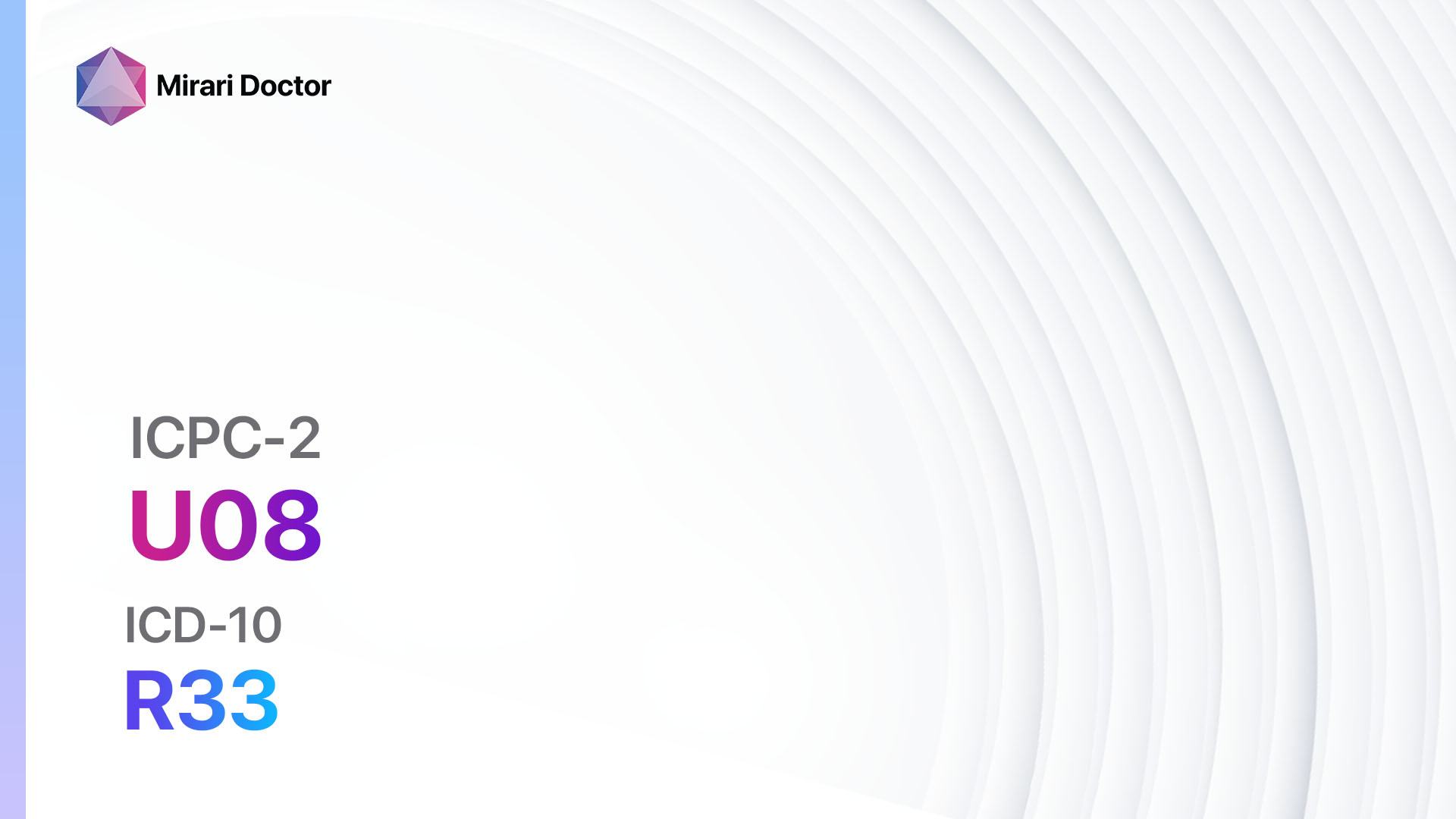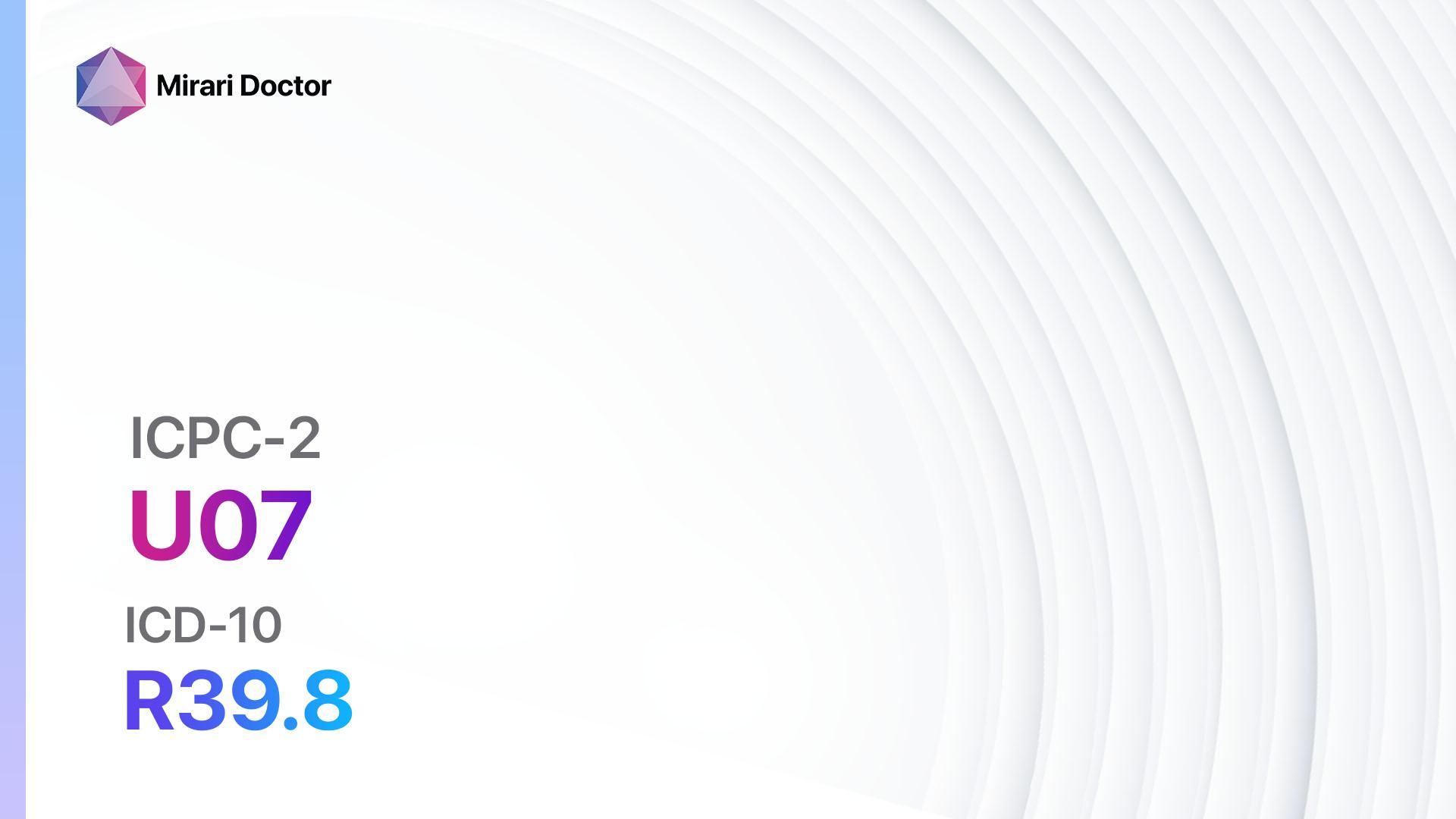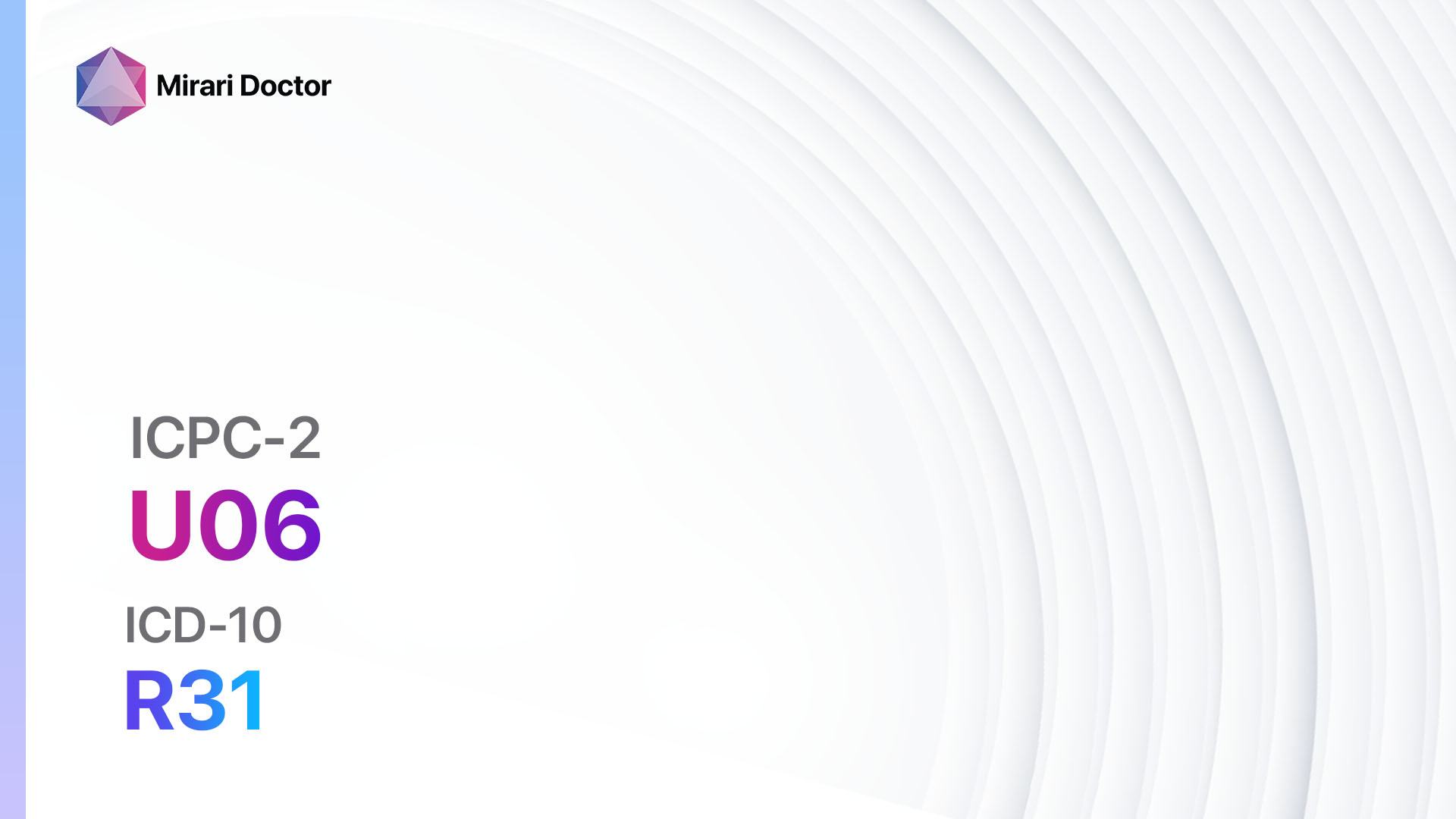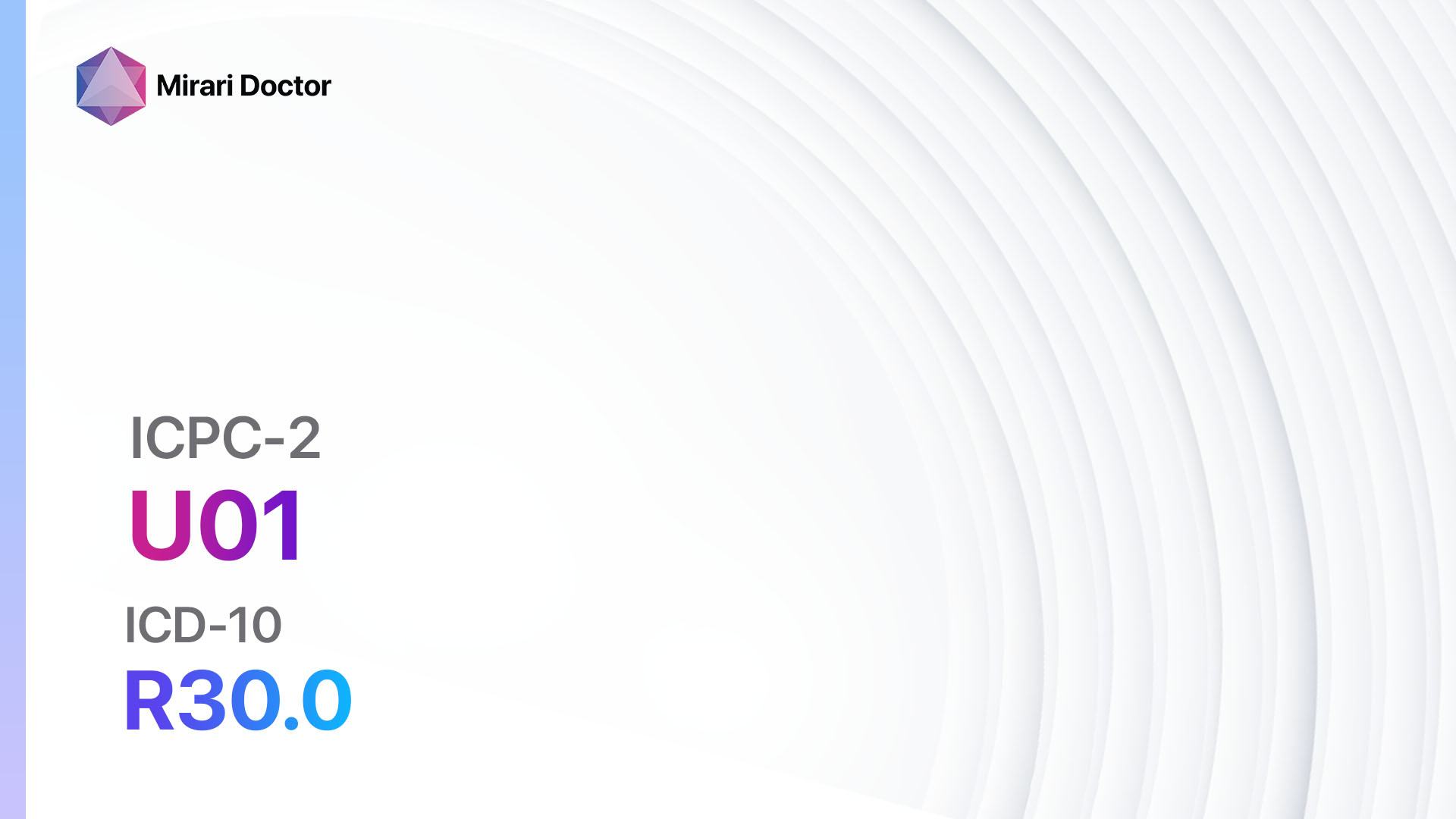
Introduction
Dysuria, also known as painful urination, is a common symptom that can be caused by various underlying conditions. It is characterized by discomfort or pain during urination[1]. This guide aims to provide healthcare professionals with a comprehensive approach to diagnosing and managing dysuria.
Codes
Symptoms
- Burning sensation during urination
- Pain or discomfort in the lower abdomen or pelvic region
- Frequent urge to urinate
- Cloudy or bloody urine
- Foul-smelling urine[2]
Causes
- Urinary tract infection (UTI)
- Sexually transmitted infections (STIs) such as gonorrhea or chlamydia
- Kidney stones
- Bladder or urethral inflammation
- Interstitial cystitis
- Prostate infection or enlargement (in males)
- Vaginal infections or irritation (in females)
- Radiation or chemotherapy treatment[3]
Diagnostic Steps
Medical History
- Gather information about the patient’s symptoms, including the duration, severity, and any associated factors.
- Ask about any previous episodes of dysuria or urinary tract infections.
- Inquire about the presence of other urinary symptoms such as urgency, frequency, or nocturia.
- Assess the patient’s sexual history, including recent sexual activity and the use of barrier methods or contraceptives.
- Determine if the patient has any underlying medical conditions or is taking any medications that may contribute to dysuria[4].
Physical Examination
- Perform a general physical examination to assess the patient’s overall health.
- Inspect the genital area for any signs of inflammation, discharge, or lesions.
- Palpate the lower abdomen to check for tenderness or masses.
- Perform a digital rectal examination in males to evaluate the prostate gland[5]..
Laboratory Tests
- Urinalysis: A urine sample is analyzed for the presence of white blood cells, red blood cells, bacteria, and other abnormalities.
- Urine culture and sensitivity: If a urinary tract infection is suspected, a urine sample is sent to the laboratory to identify the causative bacteria and determine the most effective antibiotic treatment.
- Sexually transmitted infection (STI) testing: Depending on the patient’s sexual history and risk factors, testing for STIs such as gonorrhea and chlamydia may be necessary.
- Blood tests: In some cases, blood tests may be ordered to assess kidney function or check for signs of systemic infection[6].
Diagnostic Imaging
- Renal ultrasound: This non-invasive imaging test uses sound waves to create images of the kidneys and bladder, helping to identify any structural abnormalities or kidney stones.
- Cystoscopy: In certain cases, a thin tube with a camera (cystoscope) may be inserted into the urethra and bladder to visualize the urinary tract and identify any abnormalities[7].
Other Tests
- Urodynamic studies: These tests evaluate the function of the bladder and urethra, helping to identify any abnormalities in urine flow or bladder emptying.
- Biopsy: In rare cases, a tissue sample may be taken from the bladder or urethra for further analysis[8].
Follow-up and Patient Education
- Schedule a follow-up appointment to review the results of diagnostic tests and discuss treatment options.
- Provide the patient with information on proper hygiene practices, such as wiping from front to back after urination or bowel movements.
- Educate the patient about the importance of completing the full course of antibiotics if a urinary tract infection is diagnosed.
- Advise the patient to drink plenty of fluids to help flush out bacteria and promote urinary tract health[9][10].
Possible Interventions
Traditional Interventions
Medications:
Top 5 drugs for Dysuria/painful urination:
- Antibiotics (e.g., Trimethoprim-sulfamethoxazole, Nitrofurantoin):
- Cost: Generic versions can be $3-$50/month.
- Contraindications: Known hypersensitivity to the medication.
- Side effects: Nausea, vomiting, diarrhea.
- Severe side effects: Severe allergic reactions, liver toxicity.
- Drug interactions: Warfarin, methotrexate.
- Warning: Finish the full course of antibiotics as prescribed.
- Analgesics (e.g., Phenazopyridine):
- Cost: Generic versions can be $10-$20/month.
- Contraindications: Severe kidney disease, known hypersensitivity to the medication.
- Side effects: Orange discoloration of urine, stomach upset.
- Severe side effects: Rare but serious allergic reactions.
- Drug interactions: None known.
- Warning: Do not use for more than 2 days without medical supervision.
- Antispasmodics (e.g., Oxybutynin, Tolterodine):
- Cost: Generic versions can be $10-$50/month.
- Contraindications: Urinary retention, uncontrolled narrow-angle glaucoma.
- Side effects: Dry mouth, constipation, blurred vision.
- Severe side effects: Rapid heartbeat, difficulty urinating.
- Drug interactions: Other anticholinergic medications.
- Warning: Use with caution in elderly patients.
- Alpha-blockers (e.g., Tamsulosin):
- Cost: Generic versions can be $10-$50/month.
- Contraindications: Severe liver disease, known hypersensitivity to the medication.
- Side effects: Dizziness, headache, runny nose.
- Severe side effects: Priapism (prolonged erection), low blood pressure.
- Drug interactions: Other alpha-blockers, nitrates.
- Warning: Take the medication as prescribed, usually at bedtime.
- Hormonal therapy (e.g., Estrogen cream):
- Cost: Generic versions can be $20-$50/month.
- Contraindications: Known hypersensitivity to the medication, history of certain cancers.
- Side effects: Vaginal irritation, breast tenderness.
- Severe side effects: Rare but serious allergic reactions.
- Drug interactions: None known.
- Warning: Use as directed by a healthcare professional.
Alternative Drugs:
- Herbal supplements (e.g., Cranberry extract): Some herbal supplements may have potential benefits for urinary tract health. Cost: Varies depending on the specific supplement.
- Homeopathic remedies (e.g., Cantharis, Apis mellifica): These remedies are derived from natural sources and may be used to alleviate symptoms of dysuria. Cost: Varies depending on the specific remedy.
Surgical Procedures:
In most cases, surgical intervention is not necessary for the treatment of dysuria. However, if an underlying condition requires surgical management, the following procedures may be considered:
- Urethral dilation: This procedure involves gently stretching the urethra to alleviate narrowing or strictures.
- Cystoscopy with urethral dilation: A cystoscope is used to visualize the urethra and bladder, and any strictures are dilated or widened.
- Surgical removal of kidney stones: If kidney stones are causing dysuria, they may need to be surgically removed or broken up using shock wave lithotripsy.
Alternative Interventions
- Acupuncture: May help alleviate symptoms of dysuria by promoting relaxation and improving blood flow. Cost: $60-$120 per session.
- Herbal remedies: Certain herbs, such as uva ursi or buchu, may have diuretic and antimicrobial properties that can help with urinary tract health. Cost: Varies depending on the specific remedy.
- Bladder training: This technique involves gradually increasing the time between urinations to improve bladder control and reduce urgency. Cost: None.
- Pelvic floor exercises: Strengthening the pelvic floor muscles can help improve bladder control and reduce symptoms of dysuria. Cost: None.
- Dietary modifications: Avoiding irritants such as caffeine, alcohol, and spicy foods may help reduce urinary symptoms. Cost: None.
Lifestyle Interventions
- Increased fluid intake: Drinking plenty of water can help flush out bacteria and promote urinary tract health. Cost: None.
- Urinating before and after sexual activity: Emptying the bladder before and after sexual activity can help reduce the risk of urinary tract infections. Cost: None.
- Avoiding irritants: Avoiding harsh soaps, bubble baths, and feminine hygiene products can help prevent irritation of the urinary tract. Cost: None.
- Wearing loose-fitting clothing: Wearing loose-fitting clothing and cotton underwear can help promote airflow and reduce moisture in the genital area. Cost: None.
- Stress management: Stress can exacerbate symptoms of dysuria, so practicing stress management techniques such as meditation or yoga may be beneficial. Cost: Varies depending on the specific technique.
It is important to note that the cost ranges provided are approximate and may vary depending on the location and availability of the interventions.
Mirari Cold Plasma Alternative Intervention
Understanding Mirari Cold Plasma
- Safe and Non-Invasive Treatment: Mirari Cold Plasma is a safe and non-invasive treatment option for various skin conditions. It does not require incisions, minimizing the risk of scarring, bleeding, or tissue damage.
- Efficient Extraction of Foreign Bodies: Mirari Cold Plasma facilitates the removal of foreign bodies from the skin by degrading and dissociating organic matter, allowing easier access and extraction.
- Pain Reduction and Comfort: Mirari Cold Plasma has a local analgesic effect, providing pain relief during the treatment, making it more comfortable for the patient.
- Reduced Risk of Infection: Mirari Cold Plasma has antimicrobial properties, effectively killing bacteria and reducing the risk of infection.
- Accelerated Healing and Minimal Scarring: Mirari Cold Plasma stimulates wound healing and tissue regeneration, reducing healing time and minimizing the formation of scars.
Mirari Cold Plasma Prescription
Video instructions for using Mirari Cold Plasma Device – U01 Dysuria/painful urination (ICD-10:R30.0)
| Mild | Moderate | Severe |
| Mode setting: 1 (Infection) Location: 2 (Prostate & Uterus) Morning: 15 minutes, Evening: 15 minutes |
Mode setting: 1 (Infection) Location: 2 (Prostate & Uterus) Morning: 30 minutes, Lunch: 30 minutes, Evening: 30 minutes |
Mode setting: 1 (Infection) Location: 2 (Prostate & Uterus) Morning: 30 minutes, Lunch: 30 minutes, Evening: 30 minutes |
| Mode setting: 6 (Liver/Kidney Therapy) Location: 2 (Prostate & Uterus) Morning: 15 minutes, Evening: 15 minutes |
Mode setting: 6 (Liver/Kidney Therapy) Location: 2 (Prostate & Uterus) Morning: 30 minutes, Lunch: 30 minutes, Evening: 30 minutes |
Mode setting: 6 (Liver/Kidney Therapy) Location: 2 (Prostate & Uterus) Morning: 30 minutes, Lunch: 30 minutes, Evening: 30 minutes |
| Mode setting: 7 (Immunotherapy) Location: 1 (Sacrum) Morning: 15 minutes, Evening: 15 minutes |
Mode setting:7 (Immunotherapy) Location: 1 (Sacrum) Morning: 30 minutes, Lunch: 30 minutes, Evening: 30 minutes |
Mode setting:7 (Immunotherapy) Location: 1 (Sacrum) Morning: 30 minutes, Lunch: 30 minutes, Evening: 30 minutes |
| Mode setting: 7 (Immunotherapy) Location: 1 (Sacrum) Morning: 15 minutes, Evening: 15 minutes |
Mode setting:7 (Immunotherapy) Location: 1 (Sacrum) Morning: 30 minutes, Lunch: 30 minutes, Evening: 30 minutes |
Mode setting:7 (Immunotherapy) Location: 1 (Sacrum) Morning: 30 minutes, Lunch: 30 minutes, Evening: 30 minutes |
| Total Morning: 60 minutes approx. $10 USD, Evening: 60 minutes approx. $10 USD |
Total Morning: 120 minutes approx. $20 USD, Lunch: 120 minutes approx. $20 USD, Evening: 120 minutes approx. $20 USD, |
Total Morning: 120 minutes approx. $20 USD, Lunch: 120 minutes approx. $20 USD, Evening: 120 minutes approx. $20 USD, |
| Usual treatment for 7-60 days approx. $140 USD – $1200 USD | Usual treatment for 6-8 weeks approx. $2,520 USD – $3,360 USD |
Usual treatment for 3-6 months approx. $5,400 USD – $10,800 USD
|
 |
|
Use the Mirari Cold Plasma device to treat Dysuria/painful urination effectively.
WARNING: MIRARI COLD PLASMA IS DESIGNED FOR THE HUMAN BODY WITHOUT ANY ARTIFICIAL OR THIRD PARTY PRODUCTS. USE OF OTHER PRODUCTS IN COMBINATION WITH MIRARI COLD PLASMA MAY CAUSE UNPREDICTABLE EFFECTS, HARM OR INJURY. PLEASE CONSULT A MEDICAL PROFESSIONAL BEFORE COMBINING ANY OTHER PRODUCTS WITH USE OF MIRARI.
Step 1: Cleanse the Skin
- Start by cleaning the affected area of the skin with a gentle cleanser or mild soap and water. Gently pat the area dry with a clean towel.
Step 2: Prepare the Mirari Cold Plasma device
- Ensure that the Mirari Cold Plasma device is fully charged or has fresh batteries as per the manufacturer’s instructions. Make sure the device is clean and in good working condition.
- Switch on the Mirari device using the power button or by following the specific instructions provided with the device.
- Some Mirari devices may have adjustable settings for intensity or treatment duration. Follow the manufacturer’s instructions to select the appropriate settings based on your needs and the recommended guidelines.
Step 3: Apply the Device
- Place the Mirari device in direct contact with the affected area of the skin. Gently glide or hold the device over the skin surface, ensuring even coverage of the area experiencing.
- Slowly move the Mirari device in a circular motion or follow a specific pattern as indicated in the user manual. This helps ensure thorough treatment coverage.
Step 4: Monitor and Assess:
- Keep track of your progress and evaluate the effectiveness of the Mirari device in managing your Dysuria/painful urination. If you have any concerns or notice any adverse reactions, consult with your health care professional.
Note
This guide is for informational purposes only and should not replace the advice of a medical professional. Always consult with your healthcare provider or a qualified medical professional for personal advice, diagnosis, or treatment. Do not solely rely on the information presented here for decisions about your health. Use of this information is at your own risk. The authors of this guide, nor any associated entities or platforms, are not responsible for any potential adverse effects or outcomes based on the content.
Mirari Cold Plasma System Disclaimer
- Purpose: The Mirari Cold Plasma System is a Class 2 medical device designed for use by trained healthcare professionals. It is registered for use in Thailand and Vietnam. It is not intended for use outside of these locations.
- Informational Use: The content and information provided with the device are for educational and informational purposes only. They are not a substitute for professional medical advice or care.
- Variable Outcomes: While the device is approved for specific uses, individual outcomes can differ. We do not assert or guarantee specific medical outcomes.
- Consultation: Prior to utilizing the device or making decisions based on its content, it is essential to consult with a Certified Mirari Tele-Therapist and your medical healthcare provider regarding specific protocols.
- Liability: By using this device, users are acknowledging and accepting all potential risks. Neither the manufacturer nor the distributor will be held accountable for any adverse reactions, injuries, or damages stemming from its use.
- Geographical Availability: This device has received approval for designated purposes by the Thai and Vietnam FDA. As of now, outside of Thailand and Vietnam, the Mirari Cold Plasma System is not available for purchase or use.
References
- Michels, T. C., & Sands, J. E. (2015). Dysuria: Evaluation and Differential Diagnosis in Adults. American Family Physician, 92(9), 778-786.
- Grabe, M., Bartoletti, R., Bjerklund Johansen, T. E., Cai, T., Çek, M., Köves, B., … & Wagenlehner, F. (2015). Guidelines on urological infections. European Association of Urology, 182.
- Flores-Mireles, A. L., Walker, J. N., Caparon, M., & Hultgren, S. J. (2015). Urinary tract infections: epidemiology, mechanisms of infection and treatment options. Nature Reviews Microbiology, 13(5), 269-284.
- Bent, S., Nallamothu, B. K., Simel, D. L., Fihn, S. D., & Saint, S. (2002). Does this woman have an acute uncomplicated urinary tract infection?. Jama, 287(20), 2701-2710.
- Gupta, K., Hooton, T. M., Naber, K. G., Wullt, B., Colgan, R., Miller, L. G., … & Soper, D. E. (2011). International clinical practice guidelines for the treatment of acute uncomplicated cystitis and pyelonephritis in women: a 2010 update by the Infectious Diseases Society of America and the European Society for Microbiology and Infectious Diseases. Clinical Infectious Diseases, 52(5), e103-e120.
- Schaeffer, A. J., & Schaeffer, E. M. (2012). Infections of the urinary tract. Campbell-Walsh Urology, 10, 257-326.
- Nicolle, L. E. (2008). Uncomplicated urinary tract infection in adults including uncomplicated pyelonephritis. Urologic Clinics of North America, 35(1), 1-12.
- Stamm, W. E., & Norrby, S. R. (2001). Urinary tract infections: disease panorama and challenges. The Journal of Infectious Diseases, 183(Supplement_1), S1-S4.
- Foxman, B. (2002). Epidemiology of urinary tract infections: incidence, morbidity, and economic costs. The American Journal of Medicine, 113(1), 5-13.
- Hooton, T. M. (2012). Uncomplicated urinary tract infection. New England Journal of Medicine, 366(11), 1028-1037.
Related articles
Made in USA


